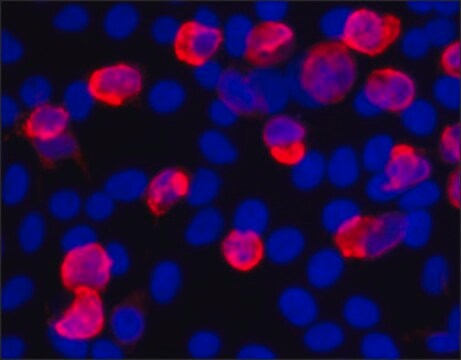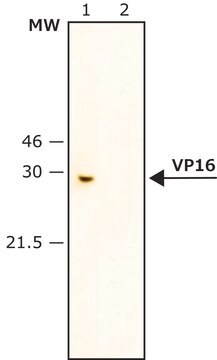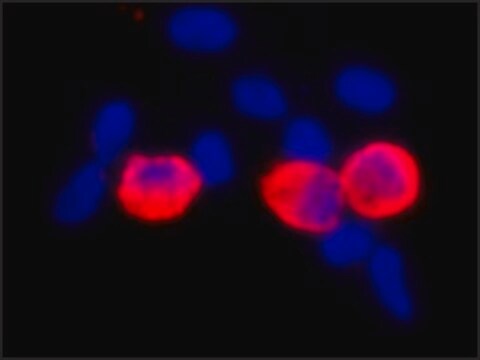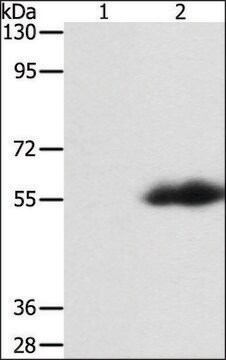V8137
Anti-V5 antibody produced in rabbit
IgG fraction of antiserum
Synonym(s):
Rabbit Anti-V5
About This Item
Recommended Products
biological source
rabbit
Quality Level
conjugate
unconjugated
antibody form
IgG fraction of antiserum
antibody product type
primary antibodies
clone
polyclonal
technique(s)
immunocytochemistry: 5 μg/mL using V5 tagged fusion protein in methanol-acetone fixed transiently transfected 293T cells
immunoprecipitation (IP): 5 μg/mL using V5 tagged fusion protein from extracts of transfected cells
western blot: 2.5 μg/mL using V5 tagged fusion protein expressed in whole extracts of transfected cells
shipped in
dry ice
storage temp.
−20°C
target post-translational modification
unmodified
General description
The rabbit Anti-V5 synthetic peptide antibody reacts with V5 tagged recombinant fusion proteins expressed in transfected mammalian cells and from in vitro translation.
Specificity
Application
- immunocytochemistry
- immunoprecipitation
- western blot
Physical form
Storage and Stability
Disclaimer
Not finding the right product?
Try our Product Selector Tool.
Storage Class Code
10 - Combustible liquids
WGK
WGK 3
Flash Point(F)
Not applicable
Flash Point(C)
Not applicable
Personal Protective Equipment
Certificates of Analysis (COA)
Search for Certificates of Analysis (COA) by entering the products Lot/Batch Number. Lot and Batch Numbers can be found on a product’s label following the words ‘Lot’ or ‘Batch’.
Already Own This Product?
Find documentation for the products that you have recently purchased in the Document Library.
Customers Also Viewed
Our team of scientists has experience in all areas of research including Life Science, Material Science, Chemical Synthesis, Chromatography, Analytical and many others.
Contact Technical Service














